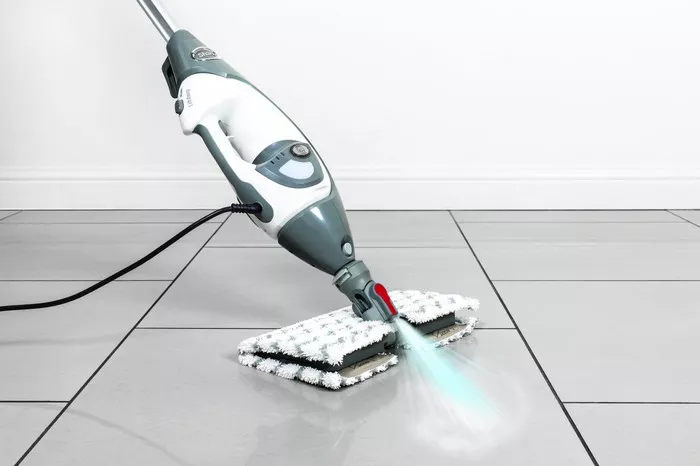When it comes to keeping our floors clean and hygienic, the debate between steam mops and traditional mops has been ongoing. Both tools have their pros and cons, and determining which is better depends on various factors such as floor type, convenience, and cleaning preferences. In this comprehensive guide, we’ll delve into the features, benefits, and drawbacks of both steam mops and traditional mops, helping you make an informed decision about which is the best option for your cleaning needs.
The Traditional Mop: A Time-Tested Cleaning Companion
Traditional mops have been a staple in households for generations, offering a simple yet effective way to clean floors. Typically consisting of a mop head attached to a handle, traditional mops are used in conjunction with a bucket of water and cleaning solution. The process involves dipping the mop into the water, wringing it out, and then mopping the floor manually.
One of the key advantages of traditional mops is their versatility. They can be used on a variety of floor surfaces, including tile, hardwood, laminate, and vinyl. Additionally, traditional mops are relatively inexpensive and widely available, making them accessible to virtually anyone.
However, traditional mops also have their drawbacks. One of the main concerns is sanitation. Since traditional mops rely on water and cleaning solution that can quickly become dirty, there is a risk of spreading germs and bacteria across the floor. Additionally, the manual labor involved in wringing out the mop can be tiring and time-consuming, especially for larger floor areas.
The Rise of the Steam Mop: Harnessing the Power of Steam
In recent years, steam mops have gained popularity as a modern alternative to traditional mops. These innovative cleaning tools utilize the power of steam to sanitize and deodorize floors without the need for harsh chemicals. Steam mops typically feature a water reservoir that heats up the water to produce steam, which is then emitted through a cleaning pad attached to the mop head.
One of the major benefits of steam mops is their ability to effectively kill germs and bacteria on the floor surface. According to the Environmental Protection Agency (EPA), steam cleaning can eliminate up to 99.9% of common household bacteria and viruses, providing a deeper level of clean compared to traditional mopping methods.
Furthermore, steam mops are environmentally friendly since they do not require the use of chemical cleaners. This makes them ideal for households with children or pets, as well as individuals with allergies or sensitivities to cleaning chemicals.
However, steam mops also have some limitations. They are generally more expensive upfront compared to traditional mops, and they may not be suitable for all types of flooring. For example, steam mopping is not recommended for use on unsealed hardwood floors or laminate flooring, as the moisture can cause damage over time.
Making the Choice: Factors to Consider
When deciding between a steam mop and a traditional mop, there are several factors to consider:
1. Floor Type: Consider the type of flooring in your home. While steam mops are effective on most sealed surfaces, traditional mops may be a better option for delicate or unsealed floors.
2. Cleaning Needs: Think about your cleaning preferences and the level of sanitation you require. If you prioritize germ elimination and eco-friendliness, a steam mop may be the better choice. However, if you prefer simplicity and versatility, a traditional mop may suffice.
3. Budget: Take into account your budgetary constraints. While steam mops offer advanced cleaning technology, they tend to be more expensive than traditional mops. Assess whether the additional features justify the higher cost for your needs.
4. Convenience: Consider the ease of use and convenience of each option. Steam mops typically require less physical effort and offer faster drying times compared to traditional mops, which may be advantageous for busy households.
Ultimately, the best choice depends on your individual circumstances and priorities. Both steam mops and traditional mops have their place in the world of cleaning, and selecting the right tool can help you achieve a cleaner, healthier home.
Conclusion
In the debate between steam mops and traditional mops, there is no one-size-fits-all answer. Both options have their own set of advantages and limitations, and the best choice depends on factors such as floor type, cleaning preferences, and budget constraints. While steam mops offer advanced cleaning technology and eco-friendly benefits, traditional mops provide simplicity, versatility, and affordability. By carefully considering your needs and weighing the pros and cons of each option, you can make an informed decision to keep your floors clean and hygienic.
FAQs
Q1. Are steam mops safe for all types of flooring?
A1: While steam mops are generally safe for use on sealed surfaces such as tile, vinyl, and sealed hardwood, they may not be suitable for delicate or unsealed floors. It’s important to check the manufacturer’s recommendations and your flooring warranty before using a steam mop, as excessive moisture can cause damage to certain floor types.
Q2. Can steam mops replace traditional mops entirely?
A2: While steam mops offer advanced cleaning technology and superior germ-killing capabilities, they may not completely replace traditional mops for all households. Traditional mops remain a cost-effective and versatile option for simple floor cleaning tasks, especially on delicate or unsealed floors where steam mops may not be suitable.
Q3. How often should I replace the cleaning pads on my steam mop?
A3: The frequency of replacing cleaning pads on a steam mop depends on factors such as usage frequency, floor condition, and manufacturer recommendations. As a general guideline, it’s advisable to replace cleaning pads regularly, typically after every few uses or when they become visibly soiled. This helps ensure optimal cleaning performance and prevents the spread of germs and bacteria.

